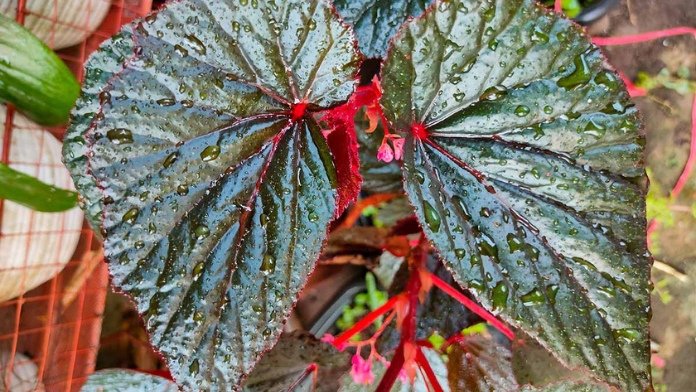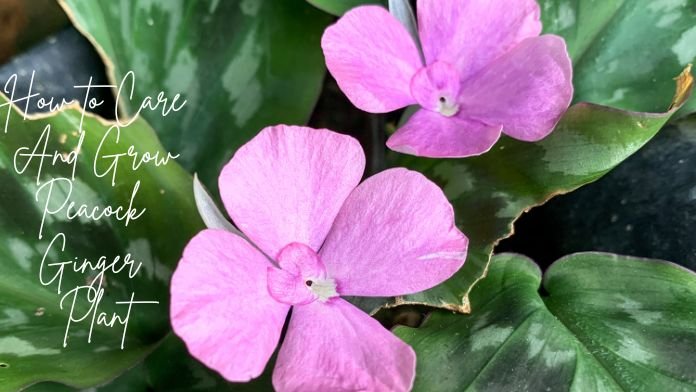
The angel wing begonia plant, scientifically known as Begonia coccinea, is part of the Begonia family. They are native to tropical and subtropical regions, making them suitable for hot and humid environments.
The name “Angel Wing” comes from the leaves’ unique shape, which resembles an angel’s wings. These plants can be grown indoors or outdoors in suitable climates. Angel wing begonia plants, known for their attractive leaves and beautiful flowers, are popular among enthusiasts.
Their distinctive wing-shaped leaves and vibrant flowers make them an excellent choice for indoor and outdoor gardens. In this guide, we’ll explore everything you need to know about angel wing begonia plants, from how to care for them to where to find them for sale.
About the Angel Wing Begonia Plant
The most recognized type of Begonia is angel-wing Begonia. Native to Brazil, it grows on erect stems with attractive piled leaves, unique colours, and a spectacular display of flowers.
The botanical name is Begonia
- Common Names: Angel Wing Begonia, Cane Begonia, Dragon Wing Begonia
- Plant Type : Perennial Shrubs
- Mature size : 12-30 inches tall, 12-24 inches wide
- Soil Type: Moist but well-drained
- Soil pH : Neutral to acidic
- Flowering time : Summer, early fall
- Flower Color: Pink, Red, White, Orange.
- Hardiness Zones : 10-11 (USDA)
- Native : to South America, Africa and Asia
- Toxicity : Toxic to dogs and cats.
Angel Wing Begonia Houseplants
Angel wing begonias make excellent houseplants because of their manageable size and attractive appearance. When growing them indoors, ensure they have enough space to spread out and get enough light.
They can be placed on windowsills, in hanging baskets or as part of a mixed indoor garden display.
How to Care for Angel Wing Begonia Plants

While other begonias may need a gentler touch, angel wing begonias are ideally suited to growing indoors as long as they are provided with the warmth and humidity they need.
In winter, they can tolerate direct sunlight and look great on a windowsill with a collection of winter-flowering plants (including their close cousin, the Rieger begonia). Caring for angel wing begonia plants requires attention to their specific needs.
Here are some essential tips to ensure your plant thrives:
Light: Angel Wing Begonia prefers bright, indirect light. Too much direct sunlight can burn its leaves, while not enough light can stunt leg growth. Place them near a window with filtered light for optimal growth.
Watering: Keep the soil constantly moist but not waterlogged. Allow the top inch of soil to dry out before watering again. Overwatering can cause root rot, so ensure adequate drainage.
Humidity: These plants thrive in humid environments. If you grow them indoors, consider using a moisture tray or room humidifier to maintain the proper humidity level.
Temperature: Angel wing begonias prefer temperatures between 60 and 75°F (15 and 24°C). Avoid exposing them to cold drafts or sudden temperature changes.
Soil: Use a well-draining potting mix rich in organic matter. A mix designed for tropical or house plants works well.
Fertilization: Feed your angel wing Begonia with a balanced, water-soluble fertilizer every 4 to 6 weeks during the growing season (spring and summer). Reduce feeding during the dormant winter months.
Pruning: Prune your plant regularly to encourage bushy growth and remove dead or damaged leaves. This helps improve air circulation around the plant.
Propagating Angel Wing Begonia
- Angel wing begonias (and other cane-type begonias) are very easy to propagate from cuttings. When new growth begins in the spring, carefully cut off the 2- to 3-inch leaf tip free of flowers and insert it into the cut soil. Keep the cutting moist and warm until new growth begins.
- A rooting hormone will increase the chances of success but is not strictly necessary, as begonias root easily from cuttings under the right conditions. Like other hybrids, angel wing begonias do not reproduce appropriately from seed (meaning you won’t get a replica of the parent plant), so only grow begonias from seed if you are confident of the same source (a seed company, for example). Example). To keep your collection fresh, take cuttings every spring and remove mature plants that are not ideal. They tend to get leggy if the conditions are not favourable, icy and drafty.
How to Plant Angel Wing Begonias
Planting angel wing begonia is a simple process. Follow these steps to ensure a successful upgrade:
- Choose the right location: Choose a location with partial shade and well-drained soil.
- Prepare the soil: Amend the soil with compost or organic matter to improve fertility and drainage.
- Planting Depth: Dig a hole slightly larger than the plant’s root ball. Place the plant in the hole, ensuring the top of the root ball is level with the soil surface.
- Watering: Water the plant well after planting to help settle the soil around the roots.
- Mulch: Apply a layer of mulch around the plant to retain moisture and suppress weeds.
- Maintenance: Check soil moisture periodically and provide additional water as needed, especially during dry periods.
Angel Wing Begonia Planting and Transplantation
Angel wing begonias do best when potted loosely, so report them whenever necessary (such as when the plant has used up its potting medium or the pot is tipping). If you will report your Begonia, do it in early spring, just as the first shoots of new growth appear. However, don’t try to transplant a flowering plant, as the shock will shorten the flower.
Varieties of Angel Wing Begonias
There are several species and cultivars of the Begonia genus, each with unique characteristics and appeal.
These are the most common types of angel wing begonias that you may consider adding to your collection:
- Begonia ‘Silver Wings‘: This hybrid variety combines the beauty of Begonia coccinea with unique silver-spotted leaves.
- Begonia ‘Coralina di Lucerna’: This variety brings a tropical feel to your garden with its coral-coloured flowers and bright green leaves. Its coral-coloured flowers resemble delicate coral reefs, while bright green leaves create a bright backdrop.
- Begonia ‘Griffon’: This unique variety has large, scalloped leaves with striking silvery patterns and bronze undersides. The leaves have an intricate silvery pattern, making for an attractive display.
- Begonia ‘Dragon Wing’: This spectacular variety features profuse red or pink flowers and glossy, asymmetrical leaves. Shiny, asymmetrical leaves add an interesting touch to the plant’s overall appearance.
- Begonia ‘Charles Jaros’: This dwarf hybrid has beautiful pink flowers and can reach two ′ in height.
- Begonia ‘Splish Splash’: This variety has deep green leaves with white accents and dark pink flowers.
Angel Wing Begonia Companion Plants
Choosing the right companion plant for your angel wing begonia can enhance its beauty and ensure a healthy growing environment.
Consider combining them with plants that have similar light and humidity requirements. Some great companions include:
Ferns: Their lush foliage complements the bright foliage of angel wing begonias.
Impatiens: These shade-loving flowers add colour and thrive in similar conditions.
Hostas: Their broad leaves provide contrasting texture and can help retain soil moisture.
Can Angel Wing Begonia Be Planted Outside?
Angel wing begonias can be planted outdoors in temperate, frost-free climates. They thrive in USDA hardiness zones 10-11. In colder climates, they can be grown outdoors during the summer and brought indoors before the first frost.
Outdoors, keep angel wing begonias in the shade, although some morning sun is fine. Keep them from getting midday or afternoon sun because they will fry. They are also not frost tolerant, so bring the plant back indoors in the fall before temperatures drop into the 40s.
When planting angel wing begonias outdoors, choose a spot with partial shade to protect them from the intense afternoon sun. Make sure the soil is well drained and enriched with organic matter. Regular watering and mulching will help maintain proper moisture levels.
Common Pests and Diseases
Like many house plants, angel wing begonias can suffer from joint problems that quickly become a nuisance. One of the most common problems is powdery mildew, although they can also suffer from rot, mealybugs, and whiteflies. Look for common pests such as aphids, spider mites, and mealybugs. Treat infestations quickly with insecticidal soap or neem oil.
Angel Wing Begonia Plants for Sale
Finding a reputable nursery or online plant store is essential when purchasing angel wing begonia plants for sale. These plants are widely available and can often be found at local garden centres, speciality plant stores, and online retailers. Look for vibrant leaves and healthy plants with no signs of pests or disease.
Conclusion
Angel wing begonia plants are a delightful addition to any indoor or garden plant collection. With their unique foliage and vibrant flowers, they add a touch of elegance and beauty to any space. By following the care tips outlined in this guide, you’ll be able to enjoy lush, healthy angel wing begonias year-round.
Whether you’re looking to buy angel wing begonia plants for sale, learn how to care for them, or find suitable companion plants, this guide has you covered. Embrace the charm of angel wing begonias and watch them bloom in your home or garden.
RELATED POSTS
View all


